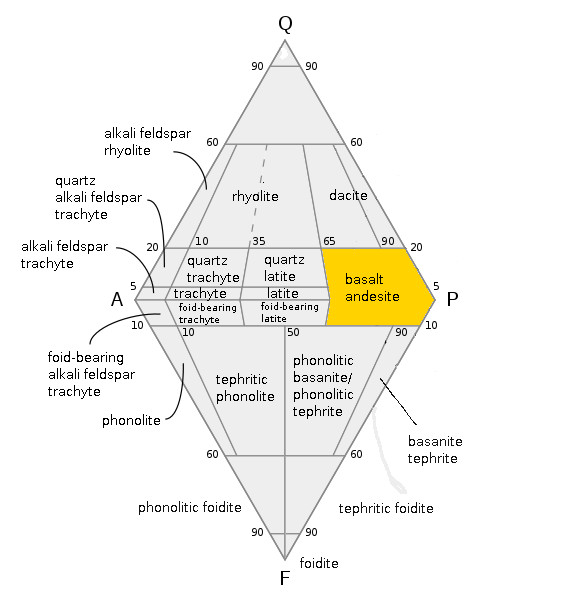|
Mesopotamian Shrub Desert
The Mesopotamian shrub desert is an ecoregion of deserts and xeric shrublands located in Western Asia. It extends across portions of Palestine, Jordan, Syria, Iraq, and Iran. Geography The Mesopotamian shrub desert is a transitional region between the semi-arid steppes of northern Mesopotamia and the Levant to the north, and the Arabian Desert to the south. The western portion of the ecoregion consists of rocky or sandy plateaus, including the Syrian Desert in southern Syria and northern Jordan, and a portion of the Harrat al-Sham black basalt desert in eastern Jordan. The eastern portion of the ecoregion includes central Mesopotamia, and the Tigris and Euphrates rivers run through it."Mesopotamian Shrub Desert". ''One Earth'', UNEP-WCMC Author Team. Accessed 29 October 2020/ref> Climate The ecoregion has an arid subtropical climate. Rainfall averages 120 mm per year, concentrated in the winter months. Daytime temperatures often exceed in the summer months. Winters are co ... [...More Info...] [...Related Items...] OR: [Wikipedia] [Google] [Baidu] [Amazon] |
Palearctic Realm
The Palearctic or Palaearctic is a biogeographic realm of the Earth, the largest of eight. Confined almost entirely to the Eastern Hemisphere, it stretches across Europe and Asia, north of the foothills of the Himalayas, and North Africa. The realm consists of several bioregions: the Mediterranean Basin; North Africa; North Arabia; Western, Central and East Asia. The Palaearctic realm also has numerous rivers and lakes, forming several freshwater ecoregions. Both the eastern and westernmost extremes of the Paleartic span into the Western Hemisphere, including Cape Dezhnyov in Chukotka Autonomous Okrug to the east and Iceland to the west. The term was first used in the 19th century, and is still in use as the basis for zoogeographic classification. History In an 1858 paper for the ''Proceedings of the Linnean Society'', British zoologist Philip Sclater first identified six terrestrial zoogeographic realms of the world: Palaearctic, Aethiopian/ Afrotropic, Indian/ Indom ... [...More Info...] [...Related Items...] OR: [Wikipedia] [Google] [Baidu] [Amazon] |
Basalt
Basalt (; ) is an aphanite, aphanitic (fine-grained) extrusive igneous rock formed from the rapid cooling of low-viscosity lava rich in magnesium and iron (mafic lava) exposed at or very near the planetary surface, surface of a terrestrial planet, rocky planet or natural satellite, moon. More than 90% of all volcanic rock on Earth is basalt. Rapid-cooling, fine-grained basalt is chemically equivalent to slow-cooling, coarse-grained gabbro. The eruption of basalt lava is observed by geologists at about 20 volcanoes per year. Basalt is also an important rock type on other planetary bodies in the Solar System. For example, the bulk of the plains of volcanism on Venus, Venus, which cover ~80% of the surface, are basaltic; the lunar mare, lunar maria are plains of flood-basaltic lava flows; and basalt is a common rock on the surface of Mars. Molten basalt lava has a low viscosity due to its relatively low silica content (between 45% and 52%), resulting in rapidly moving lava flo ... [...More Info...] [...Related Items...] OR: [Wikipedia] [Google] [Baidu] [Amazon] |
Sand Cat
The sand cat (''Felis margarita'') is a small wild cat that inhabits sandy and stony deserts far from water sources. With its sandy to light grey fur, it is well camouflaged in a desert environment. Its head-and-body length ranges from with a long tail. Its short ears are set low on the sides of the head, aiding detection of prey moving underground. The long hair covering the soles of its paws insulates its pads against the extreme temperatures found in deserts. The first sand cat known to scientists was discovered in the Algerian Sahara and described in 1858. To date, it has been recorded in several disjunct locations in Western Sahara, Morocco, Algeria, Niger, Chad, Egypt, the Arabian Peninsula and the Middle East. In Central Asia, it was first recorded in the Karakum Desert in 1925. The large gap between these two regions of its global range was partially closed in 1948, when a sand cat skin was found in an oasis of the Rub' al Khali in Oman. It is discontinuously distrib ... [...More Info...] [...Related Items...] OR: [Wikipedia] [Google] [Baidu] [Amazon] |
Striped Hyena
The striped hyena (''Hyaena hyaena'') is a species of hyena native to North and East Africa, the Middle East, the Caucasus, Central Asia, and the Indian subcontinent. It is the only extant species in the genus ''Hyaena''. It is listed by the IUCN as near-threatened, as the global population is estimated to be under 10,000 mature individuals which continues to experience deliberate and incidental persecution along with a decrease in its prey base such that it may come close to meeting a continuing decline of 10% over the next three generations. It is the smallest of the bone-cracking hyenas and retains many primitive viverrid-like characteristics lost in larger species, having a smaller and less specialised skull. Though primarily a scavenger, large specimens have been known to kill their own prey, and attacks on humans have occurred in rare instances. The striped hyena is a monogamous animal, with both males and females assisting one another in raising their cubs. A nocturnal ... [...More Info...] [...Related Items...] OR: [Wikipedia] [Google] [Baidu] [Amazon] |
Golden Jackal
The golden jackal (''Canis aureus''), also called the common jackal, is a wolf-like canid that is native to Eurasia. The golden jackal's coat varies in color from a pale creamy yellow in summer to a dark tawny beige in winter. It is smaller and has shorter legs, a shorter tail, a more elongated torso, a less-prominent forehead, and a narrower and more pointed muzzle than the Arabian wolf. It is listed as Least Concern on the IUCN Red List due to its widespread distribution and high density in areas with plenty of available food and optimum shelter. Despite its name, the golden jackal is not closely related to the African black-backed jackal or side-striped jackal, which are part of the genus '' Lupulella''. It is instead closer to wolves and coyotes. The ancestor of the golden jackal is believed to be the extinct Arno river dog that lived in southern Europe . It is described as having been a small, jackal-like canine. Genetic studies indicate that the golden jackal expande ... [...More Info...] [...Related Items...] OR: [Wikipedia] [Google] [Baidu] [Amazon] |
Populus Euphratica
''Populus'' is a genus of 25–30 species of deciduous flowering plants in the family Salicaceae, native to most of the Northern Hemisphere. English names variously applied to different species include poplar (), aspen, and cottonwood. The western balsam poplar ( ''P. trichocarpa'') was the first tree to have its full DNA code determined by DNA sequencing, in 2006. Description The genus has a large genetic diversity, and can grow from tall, with trunks up to in diameter. The bark on young trees is smooth and white to greenish or dark gray, and often has conspicuous lenticels; on old trees, it remains smooth in some species, but becomes rough and deeply fissured in others. The shoots are stout, with (unlike in the related willows) the terminal bud present. The leaves are spirally arranged, and vary in shape from triangular to circular or (rarely) lobed, and with a long petiole; in species in the sections ''Populus'' and ''Aigeiros'', the petioles are laterally flatt ... [...More Info...] [...Related Items...] OR: [Wikipedia] [Google] [Baidu] [Amazon] |
Stipagrostis Plumosa
''Stipagrostis'' is a genus of African, Asian, and Russian plants in the grass family Poaceae ( ), also called Gramineae ( ), is a large and nearly ubiquitous family of monocotyledonous flowering plants commonly known as grasses. It includes the cereal grasses, bamboos, the grasses of natural grassland and species cultivated in .... ; Species References Poaceae genera Grasses of Africa Grasses of Asia Grasses of Europe Grasses of Russia Taxa named by Christian Gottfried Daniel Nees von Esenbeck Aristidoideae {{Poaceae-stub ... [...More Info...] [...Related Items...] OR: [Wikipedia] [Google] [Baidu] [Amazon] |
Astragalus (plant)
''Astragalus'' is a large genus of over 3,000 species of herbs and small shrubs, belonging to the legume family Fabaceae and the subfamily Faboideae. It is the List of the largest genera of flowering plants, largest genus of plants in terms of described species. The genus is native to temperate regions of the Northern Hemisphere. Common names include milkvetch (most species), locoweed (in North America, some species) and goat's-thorn (Astragalus gummifer, ''A. gummifer'', Astragalus tragacantha, ''A. tragacantha''). Some pale-flowered vetches (''Vicia'' spp.) are similar in appearance, but they are more vine-like than ''Astragalus''. Description Most species in the genus have pinnately compound leaves. There are annual and perennial species. The flowers are formed in clusters in a raceme, each flower typical of the legume family, with three types of petals: banner, wings, and keel. The Sepal, calyx is tubular or bell-shaped. Taxonomy The genus was formally described in ... [...More Info...] [...Related Items...] OR: [Wikipedia] [Google] [Baidu] [Amazon] |
Achillea Fragrantissima
''Achillea'' is a genus of flowering plants in the family Asteraceae. The plants typically have frilly leaves and are known colloquially as yarrows, although this common name usually refers to '' A. millefolium''. The genus was named after the Greek mythological character Achilles, whose soldiers were said to have used yarrow to treat their wounds; this is reflected by common names such as allheal and bloodwort. The genus is native primarily to Eurasia and North America. Description These plants typically have frilly, hairy, aromatic leaves. The plants show large, flat clusters of small flowers at the top of the stem. The flowers can be white, yellow, orange, pink or red and are generally visited by many insects, and are thus characterised by a generalised pollination system. Taxonomy Carl Linnaeus described the genus in 1753. The common name "yarrow" is usually applied to ''Achillea millefolium'', but may also be used for other species within the genus. Selected speci ... [...More Info...] [...Related Items...] OR: [Wikipedia] [Google] [Baidu] [Amazon] |
Haloxylon
''Haloxylon'' is a genus of shrubs or small trees, belonging to the plant family Amaranthaceae. ''Haloxylon'' and its species are known by the common name saxaul. "Saksaul" is a common Turkic word that entered Russian through Kazakh. Description The species of genus ''Haloxylon'' are shrubs or small trees (rarely up to ) tall, with a thick trunk and many branches. The branches of the current year are green, from erect to pendant. The leaves are reduced to small scales. The inflorescences are short shoots borne on the stems of the previous year. The flowers are very small, as long or shorter than the bracteoles, bisexual or male. The two stigmas are very short. In fruit, the perianth segments develop spreading wings. The fruit with wings is about in diameter. The seed is about in diameter. Distribution and habitat The genus ''Haloxylon'' is distributed in southwest and Central Asia, from Egypt to Mongolia and China (Xinjiang and Gansu), where it grows in sandy habitats (psam ... [...More Info...] [...Related Items...] OR: [Wikipedia] [Google] [Baidu] [Amazon] |
Anabasis (plant)
''Anabasis'' is a genus of plants in the subfamily Salsoloideae of the family Amaranthaceae. It is distributed in southern Europe, North Africa, and Asia. Description The species of genus ''Anabasis'' are annual or perennial herbs or subshrubs. Their stems are fleshy and articulated, mostly glabrous with the exception of hairy tufts at the nodes, rarely with papillae-like trichomes or woolly. The opposite leaves may be reduced to small scales or normally developed. The inflorescences are elongated or condensed spikes. The flowers sit solitary or in groups of up to 4 in the axils of upper leaves (bracts), with 2 paired bracteoles. Flowers consist of 5 subequal membranous perianth segments, that are free nearly from base; 3-5 stamens without appendages; and an ovary with 2-3 thick and short stigmas. In fruit, prominent membranous wings develop on the back of the perianth segments, usually 2-3 of them larger than the others. Rarely, the perianth remains unwinged. The fruit m ... [...More Info...] [...Related Items...] OR: [Wikipedia] [Google] [Baidu] [Amazon] |






